Today I want to show you the different techniques for gouache that I use and how you can get started with gouache paint in your sketchbook. I like to have one pan in my field kit filled with white gouache, so that I have an opaque white which I can also mix with the other colors on my palette. You could also set up a small palette with gouache that works on its own.
I usually use it together with watercolor – since it’s basically the same kind of paint, you can mix the two. However, gouache is opaque and behaves a bit differently. It can be used for in your sketchbook in a few different ways, and sometimes it‘s even best to use it from the tube. Let‘s take a look at this medium.
Here’s the video version of this post:
If you can’t see the video above, watch it here.
Get started with gouache – what is gouache paint?
Gouache is a water-soluble paint that consists mainly of pigments, a binder (usually gum arabic or honey) and sometimes chalk. What makes the paint opaque is either the high amount of pigment or the chalk – manufacturers have different processes for adding opacity to their paints. Cheap gouache paints will often be streaky, whereas with artist grade paints (or even good student grade paints) you can apply the paint in even, opaque layers.
Gouache vs. Watercolor: the differences
Watercolors are based on the principle of being translucent, so you can build up layers of paint and get a glaze effect that can help to add depth. Gouache can be used that way too, but it’s a bit harder to build up a lot of transparent paint layers. With gouache, you often paint a bit differently: you start with thinned down paint, then use less and less water for each layer that goes on top – fat over lean, as the oil painters say. If you’ve painted with oil, acrylics or casein before, gouache will seem similar and you can achieve similar effects.
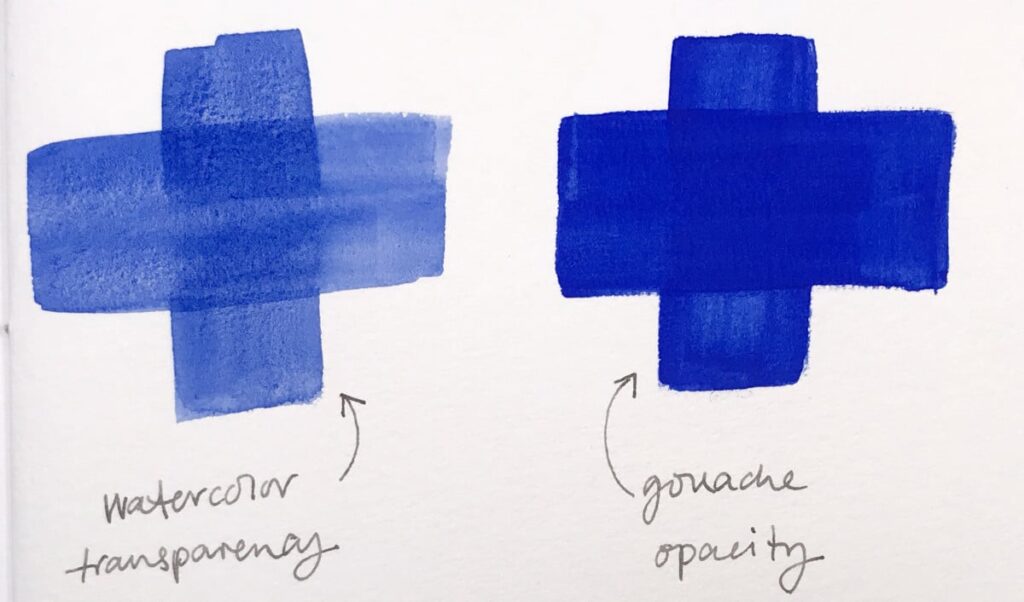
Gouache paint will dry to a smooth, solid surface that you can’t look through. You can use this in your sketchbook if you want to add bright parts over a painted surface, like white clouds over a dark sky, or bright markings on a bird. It can be easier to add these details back in than to paint around them.
Another thing to keep in mind: With watercolor you have to work from light to dark (you can’t add any brightness or white space back into your painting), with gouache you can add white highlights, or work from dark to white, because you can add light colors onto dark areas.
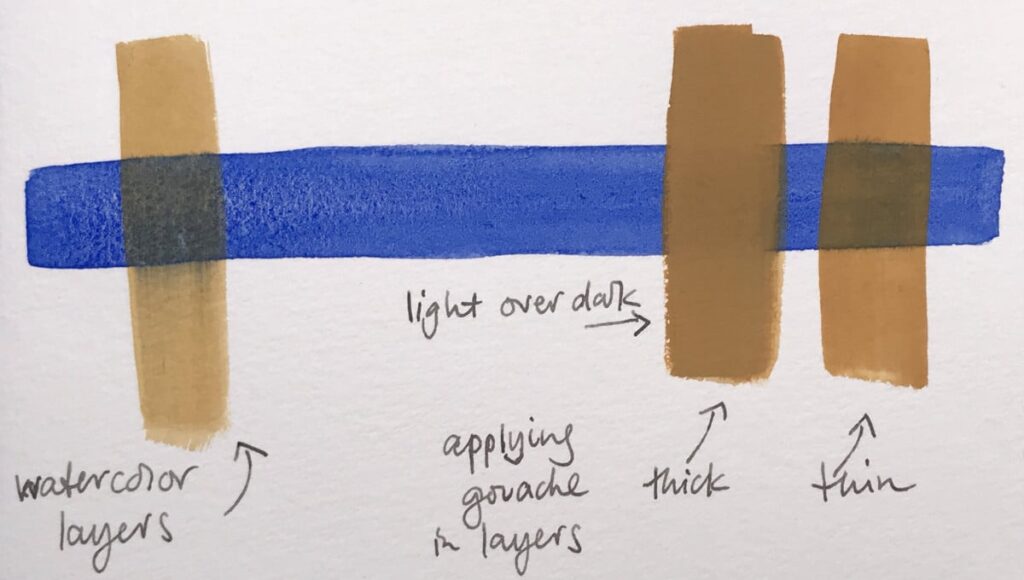
Using gouache in your sketchbook
I keep a bit of white gouache when I’m sketching in watercolor – mostly for highlights and correcting small mistakes. For a full gouache painting you could take a tube of white gouache and mix it with your tube watercolors, they are fully mixable. Or you could take your gouaches with you in a small kit or as tubes. However, filling gouache into pans will not always work.
Gouache handles best when it’s used directly out of the tube. It has a creamy consistency fresh from the tube that you can use for very thick strokes, and while it can be reactivated when it’s been dried, it will not be as soft. When you’re in the field and just want to add a bit of white or light values over your sketch, you might appreciate a small field kit.
I have a white gouache pan in my watercolor palette, and I use it for mixing and for highlights, clouds, or fixing small mistakes. To get started with gouache and just give it a try, this is a great technique. When I want to do a painting entirely in gouache, I usually use fresh gouache paint from the tube.
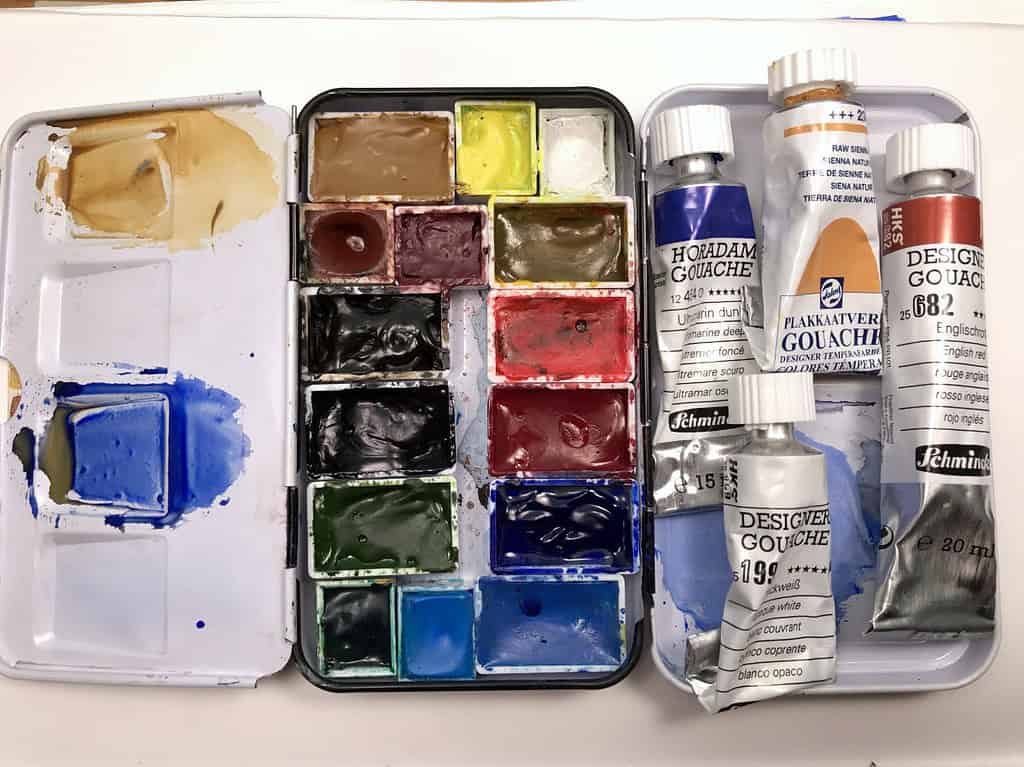
You can use your watercolor brushes for gouache, although be careful with very expensive sable brushes. Gouache feels chalkier and is a bit more harsh on the bristles. I mostly use synthetic brushes with gouache, often ones that are made for acrylics, since they are firmer.
Which paints to get
Gouache comes in tubes, so if you just want to use it here and there in your sketchbook, you will want to refill it into pans. There are a few brands that dry better than others – some paints just turn into solid cakes, or they crumble when you rewet them. I’ve tried out a lot.
If you’re used to the easy rewetting of watercolor, don’t be surprised, you have to work for your paint a bit more. I’ve found that Schmincke works best for me when rewetted, Winsor & Newton needs a bit more time, and most cheap paints aren’t worth a try. It can help to add a drop of glycerin to your paint, which keeps it more moist. I like to use gouache fresh from the tube each time I paint. This is less practical for outdoor work, but for me it’s the best way to use this kind of paint.
Painting with gouache
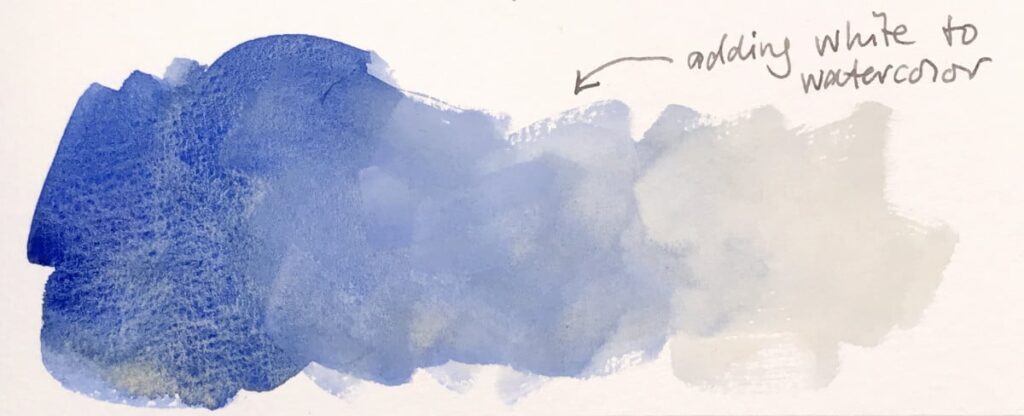
Gouache needs to be applied a bit thicker than watercolor, particularly when you paint on top of darker layers. Don’t make your mixes too thin – it will turn transparent and the paper will buckle. A cream-like consistency works well. You can apply gouache with a very dry brush and get nice textured effects. You can layer gouache to a certain extent when working in a very dry technique, but when you use a lot of water, the layers below will be reactivated and the colors will likely get muddy. If you work quickly you can get away with it. Remember this when you want to work in layers.
Gouache has a drying shift: light colors will dry darker, and dark colors tend to lighten. This has to do with the change of surface when the paint is drying. If you’re unsure, make a few test swatches, although I’ve found this to be not such a big problem in practice.
After painting, be sure to give your brushes an extra round of cleaning, since the paint can stick in the bristles – more than watercolor.
Examples for gouache from my sketchbook
Here are a few situations in which I’ve used gouache. I’ve slowly changed my use of gouache over the years, from just adding a dab of white to my watercolor sketches, to mixing more colors, to entire sketches done in gouache. For small details gouache can save a lot of time. Don’t believe the watercolor purists who don’t allow white on their palette. If you look at some of the masters like Winslow Homer or John Singer Sargent you will notice they all used white in their paintings.
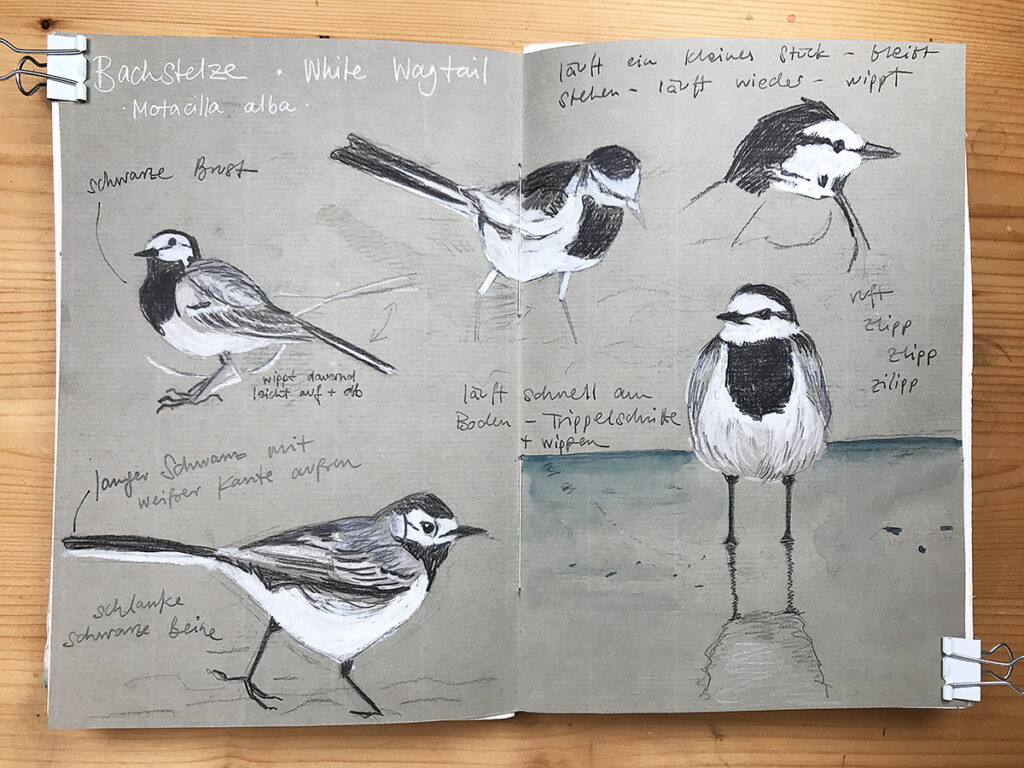
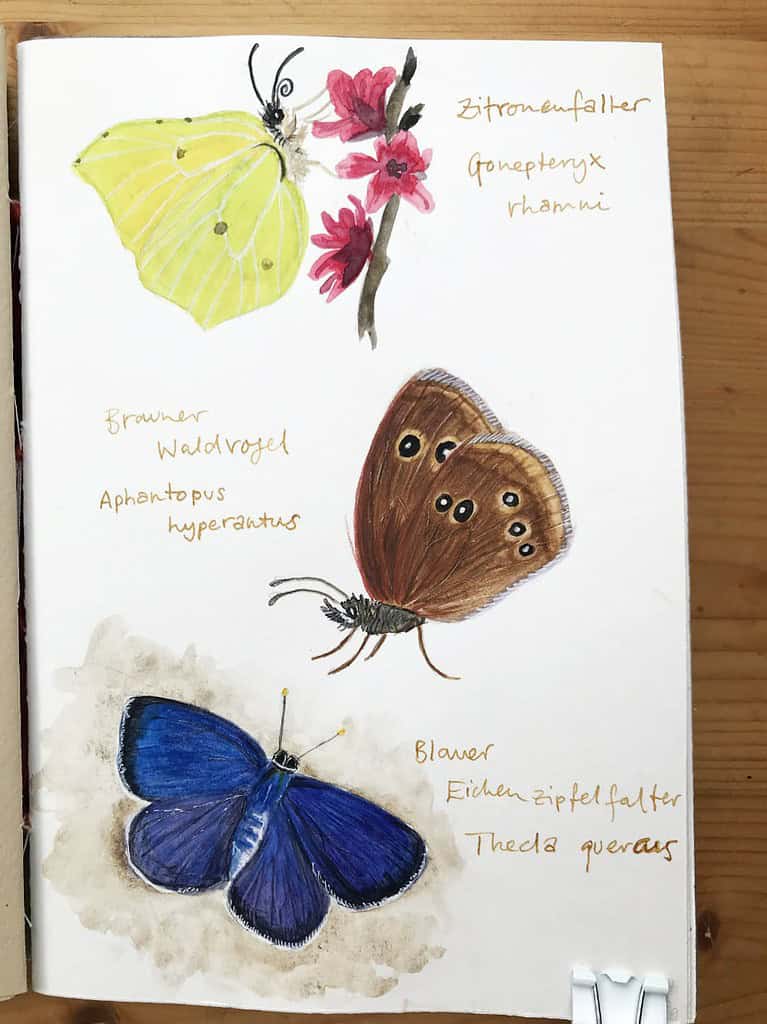
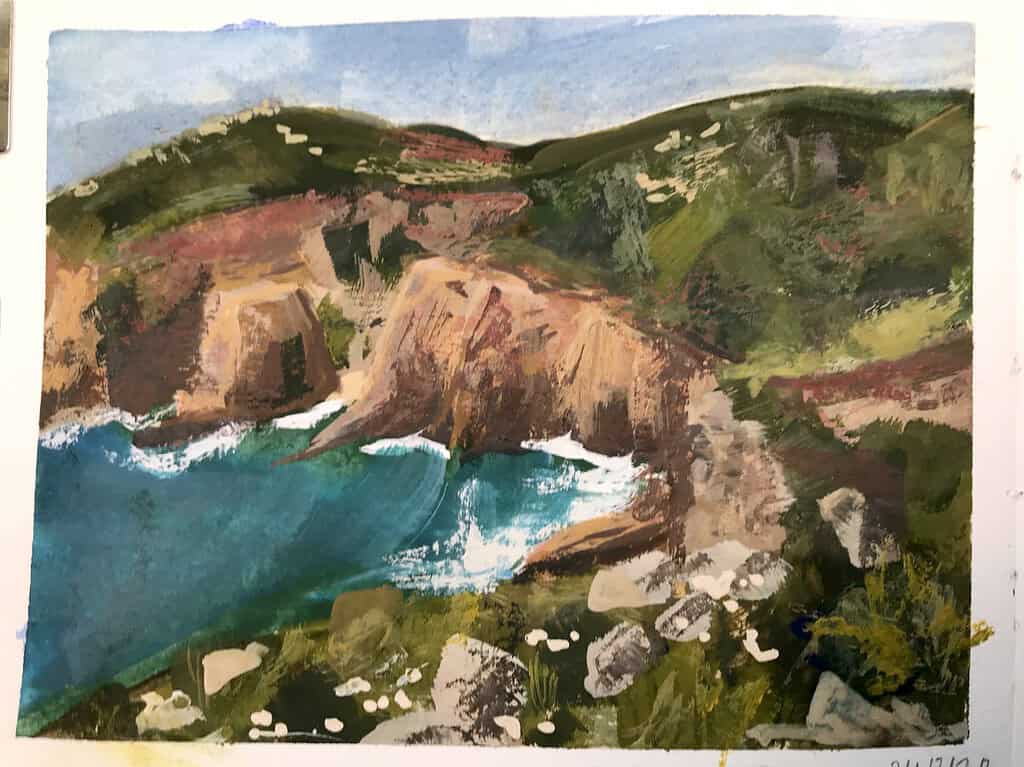
Have you tried gouache in your sketchbook? Do you want more tips to get started with gouache in your sketchbook? Let me know!
Thank you for reading this blog! It'll always stay free. To keep it going, you can support my work directly through a donation or through my nature sketching classes.
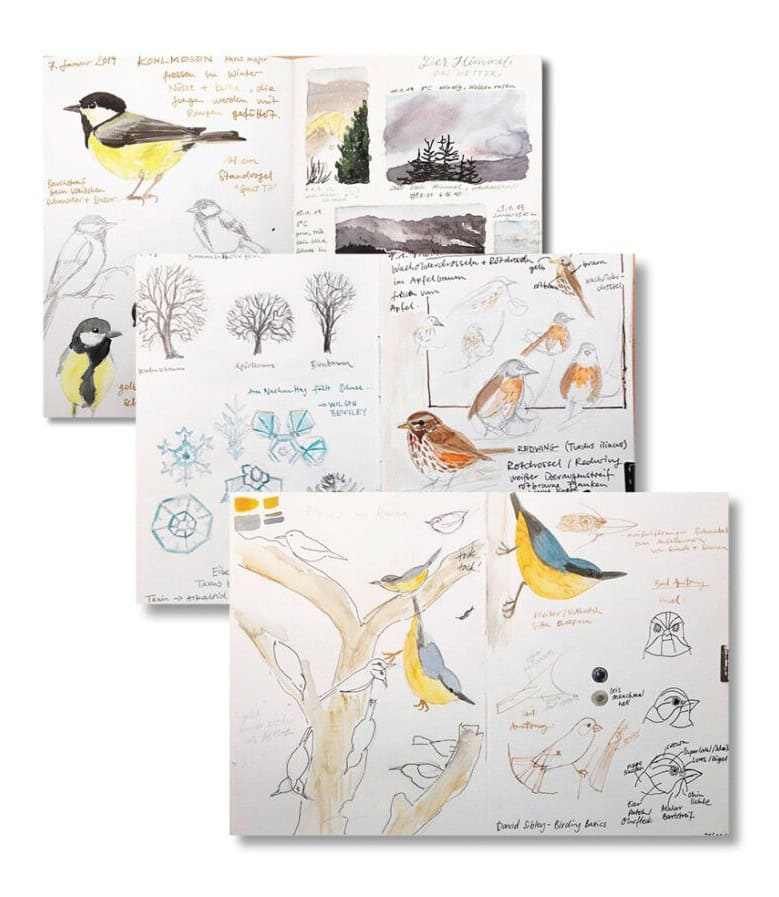
Join my free newsletter and never miss a blog post! You'll get new blog post notifications directly to your inbox. Receive 5 great sketching resources as a welcome gift for joining my newsletter! Here's what's inside:
- How to draw anything (PDF guide)
- Getting started with watercolor (free ebook)
- My favorite tips for creating great sketchbook pages
- My 5-step guide for drawing birds (PDF guide)
- My current watercolor palette layout (PDF guide)
By subscribing, you agree that I may process your information in accordance with my privacy policy

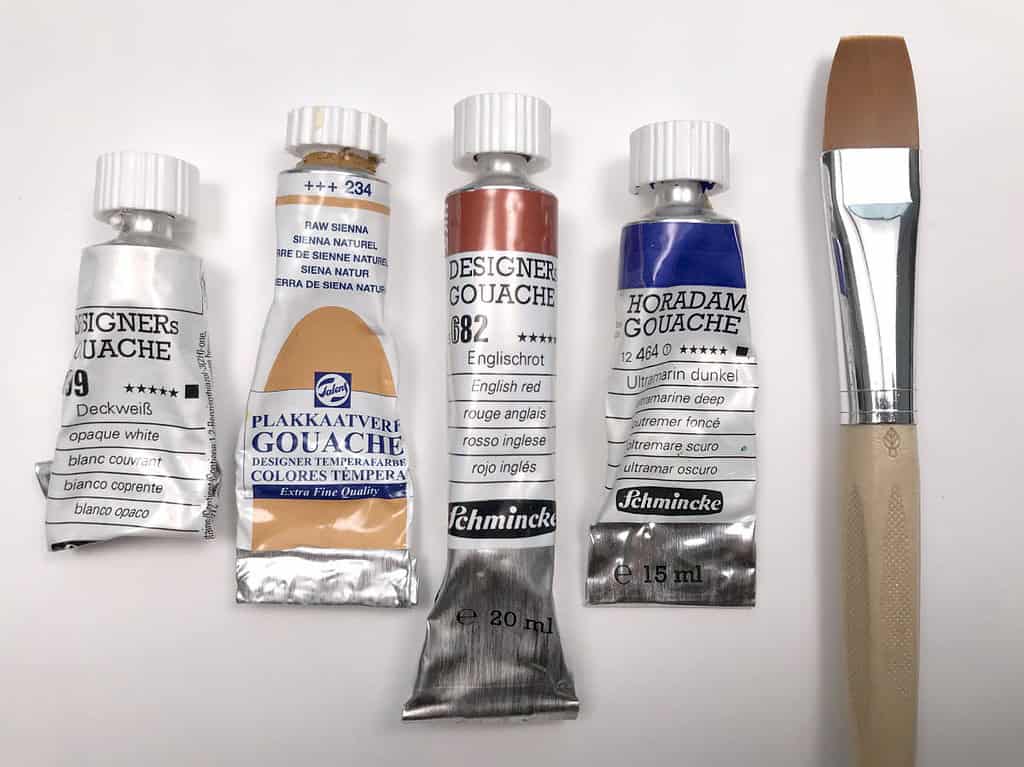
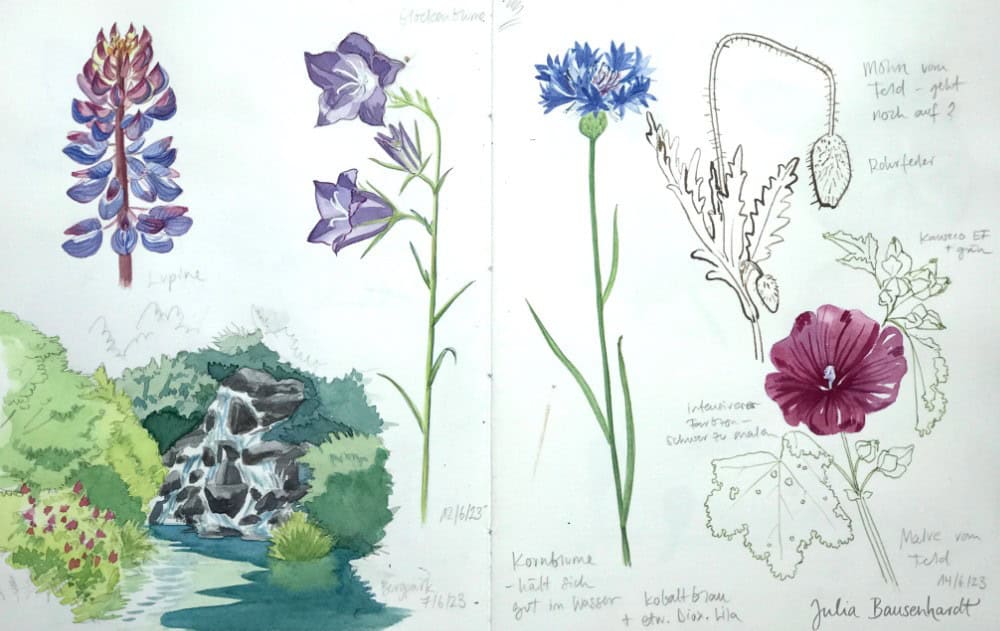
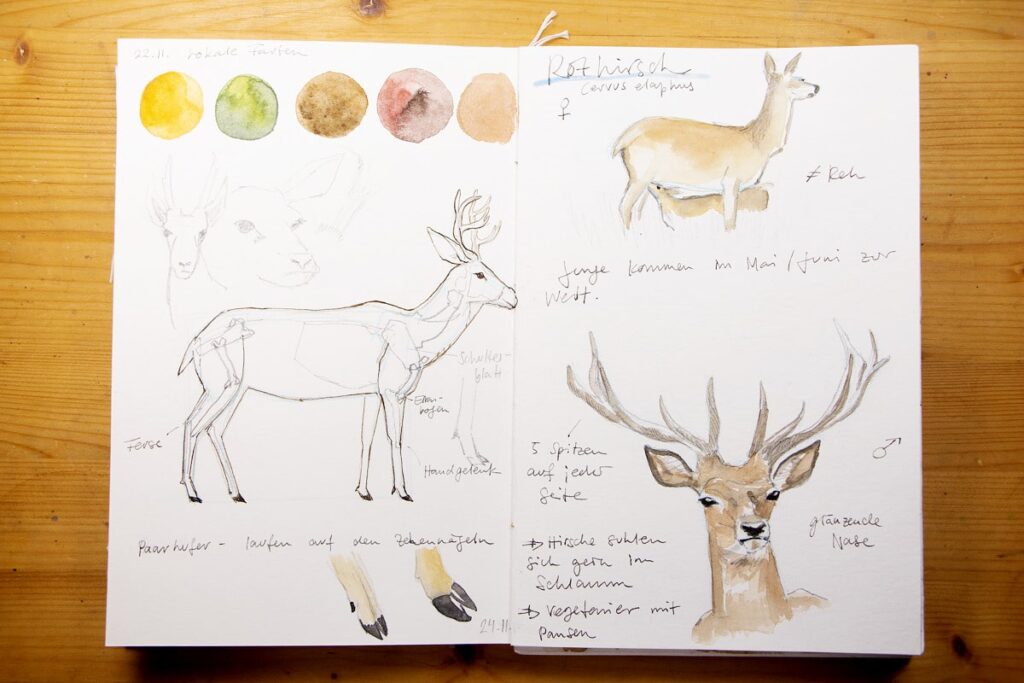
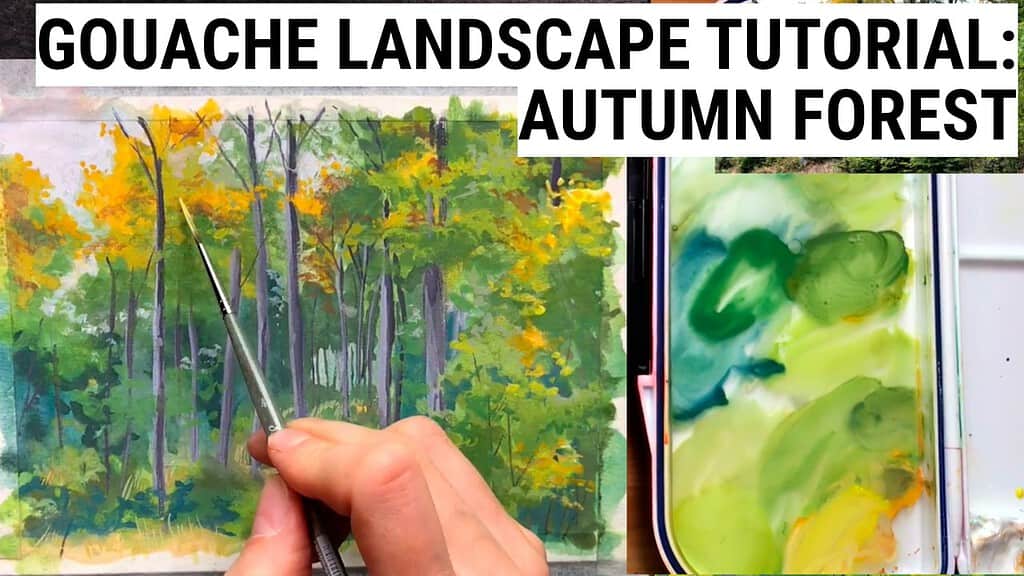
Thank you Julia, I am about to start experimenting with Gouache and Watercolour so this video was very helpful.
You’re welcome Brenda. Have fun!
Hi Julia!
What is the difference between Schmincke Designers Gouache and Schmincke Horadam Gouache? The Horadam Gouache is much easier to find in the U.S.
You are my favorite Skillshare teacher, not only because of your clear instructions but also because of your lovely presence and spirit.
Thanks!
Barbara Haugen
Thank you so much Barbara! I really appreciate your kind words.
The Horadam line uses more single pigments, and is a bit more expensive. Designer’s Gouache is formulated to match a certain color system exactly, that’s why it has a few more mixed-pigment colors. But for gouache this doesn’t matter. Both have excellent quality, I’d say get whichever you have available. 🙂
Thanks!
Thank you, Julia, very informative I only have cheap student grade gouache and always wondered why it took so long to reactivate them in the pan.
Student grade gouache can rewet well sometimes, but usually it’s best used fresh. You could try the glycerine trick, one tiny drop per pan, to make it a bit more agreeable.
Thanks for taking the time to walk through what gouache can do. I have attempted working with it, but didn’t understand it enough to be happy with it. This gives me some ideas to try. Thank you again.
That’s good to hear. Have fun exploring the medium!
Great information. Thank you
You’re welcome!
Hi Julia!
How do you decide how to start your painting? Why do artists start gouache paintings when they paint each time differently?
I guess that depends on the individual approach. A lot of artists start by blocking in big masses with basic colors and then adapt shapes and values by layering color on top. For some artists the underlying line drawing is more important as a base. My own approach changes based on what I want to achieve in my painting.
Just going to attempt gouache and this was so helpful to give me some basics to start. Thank You.